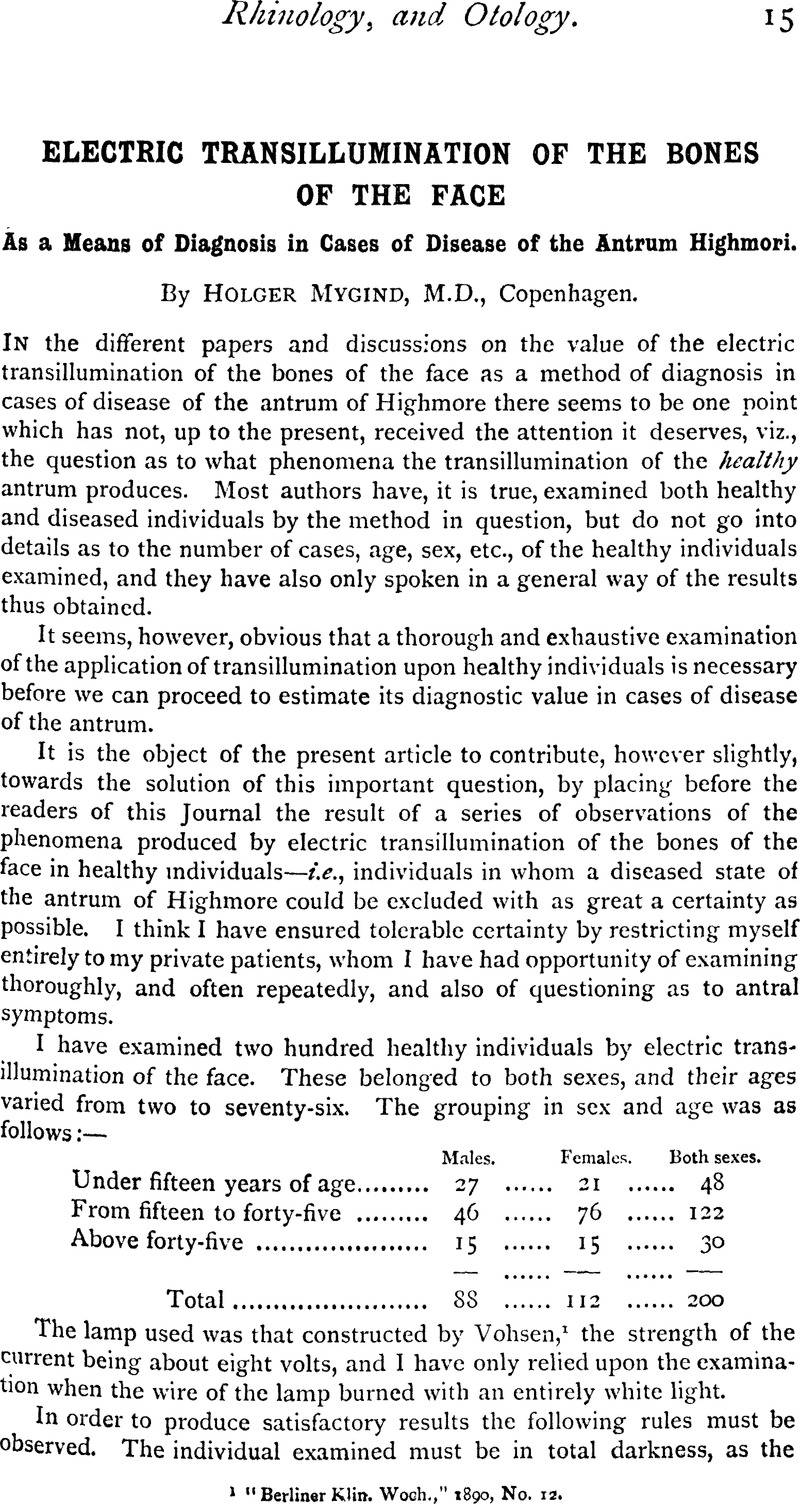Published online by Cambridge University Press: 06 August 2007

1 “Berliner Klin. woch.,” 1890, No. 12.Google Scholar
2 In some of the persons I examined it was impossible for me to discover the transillumination of the eye for a few moments after the lamp was introduced into the mouth, and that although I knew the position of the pupils and the strength and manner of their transillumination.Google Scholar
3 “Berliner Klin. Woch.,” 1892, Nos.27 and 28.Google Scholar
4 4 No importance is attached, as a matter of course, to the absolute value of the figures found, but only to the considerable difference between the groups with regard to the non-illumination of the eye.Google Scholar
5 “Normale und pathologische Anatomie der Nasenhöhle und ihrer pneumatischen Anhänge.” Vienna 1882, p. 101 and following.Google Scholar
6 Should future investigations confirm my experience, viz., that in no case of vivid illumination of the face (as described above) does the one pupil remain dark while the other is illuminated (that is, in healthy individuals), this phenomenon, when exhibited in thin, slightlybuilt individuals, might give a positive result, viz., be a proof of the presence of pus in the antrum.Google Scholar